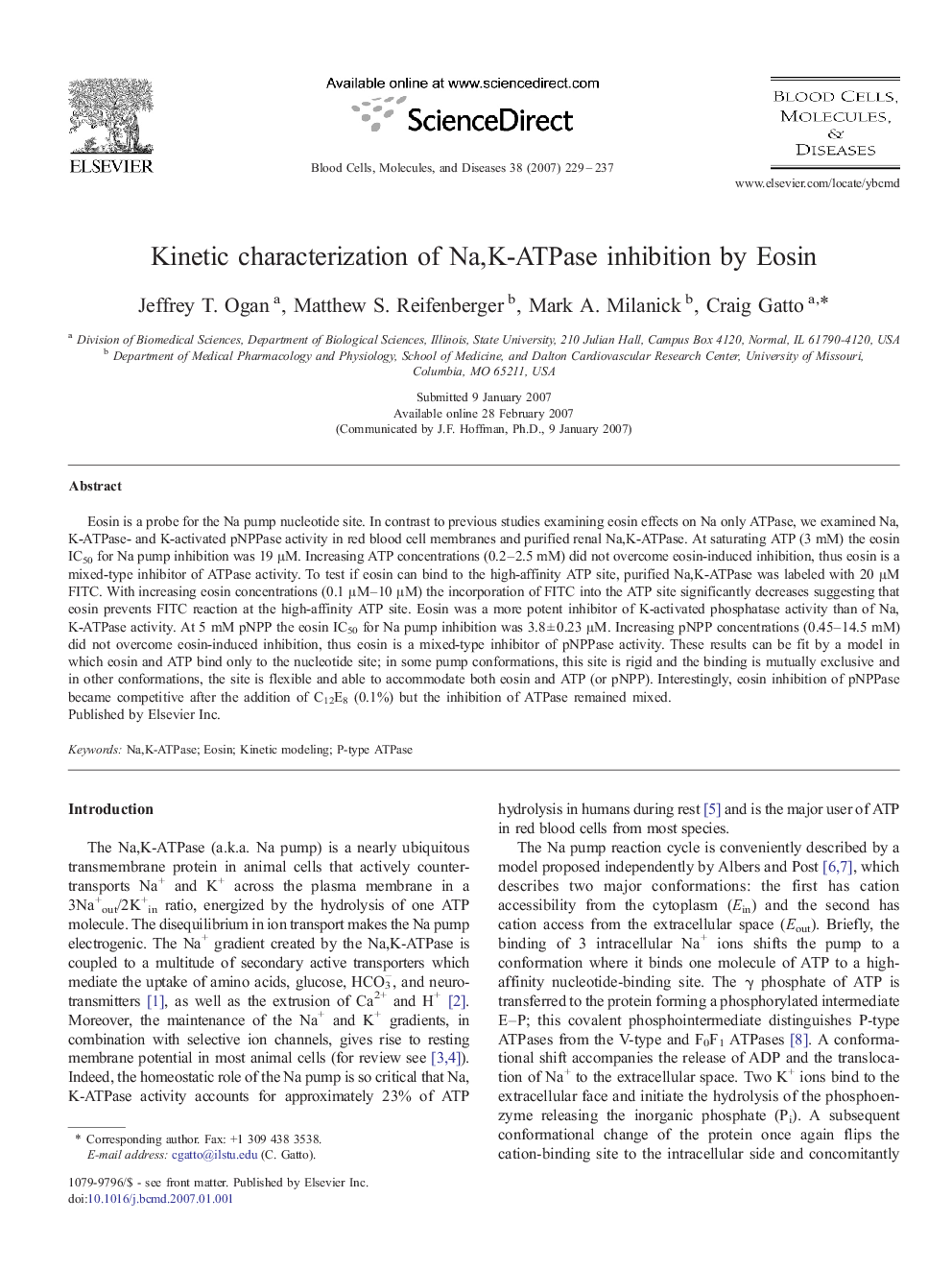| Article ID | Journal | Published Year | Pages | File Type |
|---|---|---|---|---|
| 2828258 | Blood Cells, Molecules, and Diseases | 2007 | 9 Pages |
Eosin is a probe for the Na pump nucleotide site. In contrast to previous studies examining eosin effects on Na only ATPase, we examined Na,K-ATPase- and K-activated pNPPase activity in red blood cell membranes and purified renal Na,K-ATPase. At saturating ATP (3 mM) the eosin IC50 for Na pump inhibition was 19 μM. Increasing ATP concentrations (0.2–2.5 mM) did not overcome eosin-induced inhibition, thus eosin is a mixed-type inhibitor of ATPase activity. To test if eosin can bind to the high-affinity ATP site, purified Na,K-ATPase was labeled with 20 μM FITC. With increasing eosin concentrations (0.1 μM–10 μM) the incorporation of FITC into the ATP site significantly decreases suggesting that eosin prevents FITC reaction at the high-affinity ATP site. Eosin was a more potent inhibitor of K-activated phosphatase activity than of Na,K-ATPase activity. At 5 mM pNPP the eosin IC50 for Na pump inhibition was 3.8 ± 0.23 μM. Increasing pNPP concentrations (0.45–14.5 mM) did not overcome eosin-induced inhibition, thus eosin is a mixed-type inhibitor of pNPPase activity. These results can be fit by a model in which eosin and ATP bind only to the nucleotide site; in some pump conformations, this site is rigid and the binding is mutually exclusive and in other conformations, the site is flexible and able to accommodate both eosin and ATP (or pNPP). Interestingly, eosin inhibition of pNPPase became competitive after the addition of C12E8 (0.1%) but the inhibition of ATPase remained mixed.
